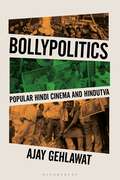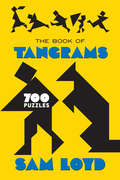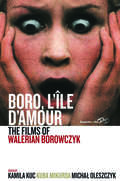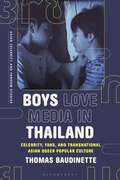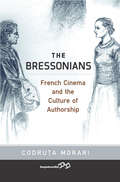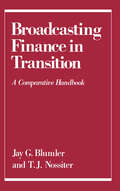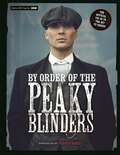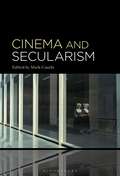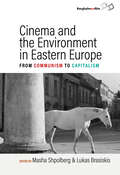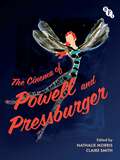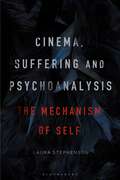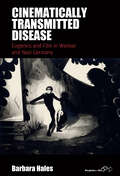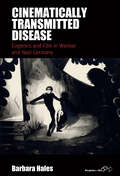- Table View
- List View
Bluecoat, Liverpool: The UK's first arts centre
Bluecoat is a unique and much-loved Liverpool institution, its oldest city centre building. This book tells the fascinating story of its transformation from charity school to contemporary arts centre, the UK’s first. Its early 18th century origins shed light on the religious and maritime mercantile environment of the growing port, whose merchants supported the school. Echoes from then are revealed in themes explored by artists in the 20th century, including slavery and colonial legacies. The predominant focus is on an inclusive building for the arts, starting with colourful bohemian society, the Sandon, who established an artistic colony in 1907, hosting significant exhibitions by the Post-Impressionists and many leading modern British artists. Bluecoat Society of Arts emerged as the building’s custodians, paving the way for the arts centre which, despite financial struggles and wartime bomb damage, survived and continues to play a prominent role in Liverpool’s and the UK’s culture. Bluecoat is described as where ‘village hall meets the avant-garde’. In its rich story, Picasso, Stravinsky, Yoko Ono, Captain Beefheart, Simon Rattle and the inspirational Fanny Calder are just some of the names encountered, as key strands, including music, visual art, performance and the building’s tenants, are traced.
Bollypolitics: Popular Hindi Cinema and Hindutva (World Cinema)
by Ajay GehlawatThis book provides an in-depth exploration of the evolving landscape of Bollywood cinema in response to recent socio-political changes in India, including a surge in sectarian violence and the ascent of Hindutva, or Hindu nationalism, under Prime Minister Narendra Modi's leadership. Through a comprehensive analysis of prominent filmmakers and actors like Sanjay Leela Bhansali, Kangana Ranaut, Akshay Kumar, and Anupam Kher, Ajay Gehlawat investigates the extent to which their recent works align with key tenets of the Hindutva movement. He scrutinizes the growing influence of the Bharatiya Janata Party (BJP) on film production, manifesting in collaborations covering diverse themes, from Modi's Clean India initiative to the nation's space exploration endeavors and grand historical epics such as Padmaavat (2018) and Manikarnika (2019) that seek to reshape Indian history in line with Hindutva ideology.Gehlawat goes on to dissect smaller budget films like Article 15 (2019) and Shubh Mangal Zyada Saavdhan (2020), which tackle pressing social issues like caste-based violence and homophobia exacerbated by the surge in right-wing extremism in India. In doing so, he elucidates the profound and far-reaching impact of Hindutva ideology on Indian cinematic narratives and aesthetics, while also considering the broader implications for Indian society as a whole.
The Book of Tangrams: 700 Puzzles
by Sam LoydThe challenge of the tangram, the original "Chinese puzzle," lies in your ability to arrange seven geometrical pieces — a square, a rhomboid, and five triangles — into a variety of different shapes. Collected by Sam Loyd, America's great puzzle expert, these 700 endlessly absorbing tangrams offer hours of mind-expanding amusement. Sam Loyd's The Book of Tangrams is also a tribute to this tricky and intriguing puzzle. In a famous and delightful spoof of the tangram's history, Loyd includes running commentary on the popular puzzle's origins in ancient China, its religious significance, and its relation to the Pythagorean theorem. But don't let the amusing dialogue fool you! The puzzles are genuine challenges. If you've ever tried your hand at tangrams before, you're probably already addicted to their limitless possibilities. If you haven't, this classic puzzle potpourri will have you hooked in no time! Solutions are included.
Boro, L'Île d'Amour: The Films of Walerian Borowczyk
by Kamila Kuc Kuba Mikurda Micha 322 OleszczykThere has been a recent revival of interest in the work of Polish film director Walerian Borowczyk, a label-defying auteur and “escape artist” if there ever was one. This collection serves as an introduction and a guide to Borowczyk’s complex and ambiguous body of work, including panoramic views of the director’s output, focused studies of particular movies, and more personal, impressionistic pieces. Taken together, these contributions comprise a wide-ranging survey that is markedly experimental in character, allowing scholars to gain insight into previously unnoticed aspects of Borowczyk’s oeuvre.
Boys Love Media in Thailand: Celebrity, Fans, and Transnational Asian Queer Popular Culture (Asian Celebrity and Fandom Studies)
by Thomas BaudinetteOver the past several years, the Thai popular culture landscape has radically transformed due to the emergence of “Boys Love” (BL) soap operas which celebrate the love between handsome young men. Boys Love Media in Thailand: Celebrity, Fans, and Transnational Asian Queer Popular Culture is the first book length study of this increasingly significant transnational pop culture phenomenon. Drawing upon six years of ethnographic research, the book reveals BL's impacts on depictions of same-sex desire in Thai media culture and the resultant mainstreaming of queer romance through new forms of celebrity and participatory fandom. The author explores how the rise of BL has transformed contemporary Thai consumer culture, leading to heterosexual female fans of male celebrities who perform homoeroticism becoming the main audience to whom Thai pop culture is geared. Through the case study of BL, this book thus also investigates how Thai media is responding to broader regional trends across Asia where the economic potentials of female and queer fans are becoming increasingly important. Baudinette ultimately argues that the center of queer cultural production in Asia has shifted from Japan to Thailand, investigating both the growing international fandom of Thailand's BL series as well as the influence of international investment into the development of these media. The book particularly focuses on specific case studies of the fandom for Thai BL celebrity couples in Thailand, China, the Philippines, and Japan to explore how BL series have transformed each of these national contexts' queer consumer cultures.
The Bressonians: French Cinema and the Culture of Authorship (G - Reference,information And Interdisciplinary Subjects Ser.)
by Codruţa MorariHow should we understand film authorship in an era when the idea of the solitary and sovereign auteur has come under attack, with critics proclaiming the death of the author and the end of cinema? The Bressonians provides an answer in the form of a strikingly original study of Bresson and his influence on the work of filmmakers Jean Eustache and Maurice Pialat. Extending the discourse of authorship beyond the idea of a singular visionary, it explores how the imperatives of excellence function within cinema’s pluralistic community. Bresson’s example offered both an artistic legacy and a creative burden within which filmmakers reckoned in different, often arduous, and altogether compelling ways.
British Children's Literature in Japanese Culture: Wonderlands and Looking-Glasses (Bloomsbury Perspectives on Children's Literature)
by Dr Catherine ButlerWhether watching Studio Ghibli adaptations of British children's books, visiting Harry Potter sites in Britain or eating at Alice in Wonderland-themed restaurants in Tokyo, the Japanese have a close and multifaceted relationship with British children's literature. In this, the first comprehensive study to explore this engagement, Catherine Butler considers its many manifestations in print, on the screen, in tourist locations and throughout Japanese popular culture. Taking stock of the influence of literary works such as Gulliver's Travels, Alice's Adventures in Wonderland, The Tale of Peter Rabbit, Tom's Midnight Garden, and the Harry Potter series, this lively account draws on literary criticism, translation, film and tourist studies to explore how British children's books have been selected, translated, understood, adapted and reworked into Japanese commercial, touristic and imaginative culture. Using theoretically informed case studies this book will consider both individual texts and their wider cultural contexts, translations and adaptations (such as the numerous adaptations of British children's books by Studio Ghibli and others), the dissemination of distinctive tropes such as magical schools into Japanese children's literature and popular culture, and the ways in which British children's books and their settings have become part of way that Japanese people understand Britain itself.
Broadcasting Finance In Transition: A Comparative Handbook
by Jay G. Blumler T. J. NossiterThis is an important study of the crucial issue of alternatives in commercial and public support of broadcasting in the U.S. and Europe. The Peacock Committee on Financing the BBC, a committee sponsored by the British government, commissioned Jay Blumler and Tom Nossiter to investigate the impact of alternate ways of financing the BBC on the range and quality of broadcasting. They then commissioned papers on broadcasting financing in the United States, Canada, the Netherlands, France, Italy, Sweden, Germany, Australia, New Zealand, and Japan to answer the question: "Should the BBC allow some commercial support in financing?" This is an essential collection for broadcast policy-makers and researchers.
BTS: The Unauthorized Fan Guide
by Helen BrownBTS: Kings of K-Pop is the must-have commemorative celebration of BTS, the Korean boy band with a global army of fans.With their talent, dedication, clever choreography, and catchy blend of pop, hip-hop and R&B, this must-have fan book offers an extensive look at what makes the Bangtan Boys so memorable. Packed with fascinating facts and sensational secrets around how the band got together and their rise to fame, to their first number one and beyond, this book takes fans up close and personal with RM, J-Hope, Suga, Jimin, V, Jin and Jungkook. Filled with pages of brilliant photos and including an advanced quiz, this is the ultimate book for ARMYs as well as new K-Pop fans everywhere.
By Order of the Peaky Blinders: The Official Companion to the Hit TV Series
by Matt AllenThe official companion to the hit TV show, Peaky Blinders, fully illustrated in colour. Packed full of behind-the-scenes stories and interviews with the cast and creators of the show, this is the first official book. ‘A must-read for fans of the ruthless Shelby clan’ Daily Express‘A hoard of information lurks inside the first official companion to the hit drama’ Sunday Express‘A heavyweight hardback in every sense of the word . . . essential reading for fans of the series’ Birmingham Mail Walk through The Garrison Tavern's saloon bar doors and onto the streets of Birmingham, past the fire-belching factories and away to the horse fairs on the edge of town. Welcome to the world of the Peaky Blinders.Since it first hit our screens in 2013, Peaky Blinders has evolved from cult hit to a global phenomenon. By Order of the Peaky Blinders is the first official book of the TV series, featuring exclusive interviews with creator and writer Steven Knight, the cast and the production teams, and a wealth of insider knowledge of the show.
The Cabin in the Woods (Devil's Advocates)
by Susanne KordThe Cabin in the Woods (2012), directed by Drew Goddard and co-authored by Goddard and Joss Whedon of Buffy-fame, was famously described by co-author Whedon as his ‘loving hate letter’ to horror. Interviews with Whedon reveal that his struggles with modern cinematic horror are not merely emotional, but intensely philosophical. This book is the first to read Cabin as a philosophical metatext that asks what horror offers audiences and why audiences accept. Like any good philosophy, the film offers no answers but raises questions: what ‘choices’ are possible in a pre-determined universe? How do we, the audience, see the victims of violence, and with what ethical consequences? And finally, the most fraught question of all: why do we keep looking?
Cahiers du Cinema: Interviews with Film Directors, 1953-1970
by James R RussoCahiers du Cinema: Interviews with Film Directors, 19531970 brings together eighteen directorsOtto Preminger, Roberto Rossellini, John Ford, Howard Hawks, Max Ophuls, Nicholas Ray, Orson Welles, Fritz Lang, Alain Resnais, Jean-Luc Godard, Francois Truffaut, Michelangelo Antonioni, Carl-Theodor Dreyer, Federico Fellini, Robert Bresson, Joseph L. Mankiewicz, Jean Renoir, and Eric Rohmer -- who are among the leading auteurs in the history of the cinema. The interviews were all commissioned for the legendary movie journal Cahiers du Cinema (the oldest such French-language magazine in continuous publication), the first critical enterprise to treat films, particularly Hollywood films, as a serious art form. Co-founded in 1951 by Andre Bazin, Jacques Doniol-Valcroze, and Joseph-Marie Lo Duca, Cahiers was edited, after 1957, by Rohmer himself, including among its writers (and interviewers) Jacques Rivette, Godard, Claude Chabrol, and Truffaut -- all of whom went on to become highly influential filmmakers. Conducted in Cahiers famously in-depth, critical and engaged style, the interviews in this volume catch each director at a crucial juncture in his development as an artist, and stand as a historical record of the dominance of the Euro-American tradition in cinematic art. This is the first such collection of its kind in English, edited with a contextualizing introduction, critical biographies, career filmographies, and a comprehensive index by the American scholar James R. Russo.
Candyman (Devil's Advocates)
by Jon TowlsonWhen Candyman was released in 1992, Roger Ebert gave it his thumbs up, remarking that the film was “scaring him with ideas and gore, rather than just gore.” Indeed, Candyman is almost unique in 1990s horror cinema in that it tackles its sociopolitical themes head on. As critic Kirsten Moana Thompson has remarked, Candyman is "the return of the repressed as national allegory": the film’s hook-handed killer of urban legend embodies a history of racism, miscegenation, lynching, and slavery, "the taboo secrets of America’s past and present."In this book, Jon Towlson considers how Candyman might be read both as a "return of the repressed" during the George H. W. Bush era, and as an example of nineties neoconservative horror. He traces the project’s development from its origins as a Clive Barker short story ("The Forbidden"); discusses the importance of its gritty real-life Cabrini-Green setting; and analyzes the film’s appropriation (and interrogation) of urban myth. The two official sequels (Candyman: Farewell to the Flesh [1995] and Candyman: Day of the Dead [1999]) are also considered, plus a number of other urban myth-inspired horror movies such as Bloody Mary (2006) and films in the Urban Legend franchise. The book features an in-depth interview with Candyman’s writer-director Bernard Rose.
Cape Fear (Devil's Advocates)
by Rob DanielMartin Scorsese’s Cape Fear (1991) opens with a shot of water and climaxes on a raging river. Despite, or perhaps because of, the film’s great commercial success, critical analysis of the film typically does not delve beneath the surface of Scorsese’s first major box office hit. As it reaches its 30th anniversary, Cape Fear is now ripe for a full appraisal. The remake of J. Lee Thompson’s 1962 Cape Fear was originally conceived as a straightforward thriller intended for Steven Spielberg. Author Rob Daniel investigates the fascinating ways Scorsese’s style and preoccupations transform his version into a horror epic. The director’s love of fear cinema, his Catholicism and filmmaking techniques shift Cape Fear into terrifying psychological and psychosexual waters. The analysis also examines the influence of Gothic literature and fairy tales, plus how academic approaches to genre aid an understanding of the film.
Carrie (Devil's Advocates)
by Neil MitchellBrian De Palma's adaptation of Stephen King's debut novel, Carrie (1976), is one of the defining films of 1970s "New Hollywood" style and a horror classic. The story of a teenage social outcast who discovers she possesses latent psychic powers that allow her to deliver retribution to her peers, teachers, and abusive mother, Carrie was an enormous commercial and critical success and is still one of the finest screen adaptations of a King novel. This contribution to the Devil's Advocates series not only breaks the film down into its formal componenets--its themes, stylistic tropes, technical approaches, uses of color and sound, dialogue, and visual symbolism--but also considers a multitude of other factors contributing to the work's classic status. The act of adapting King's novel for the big screen, the origins of the novel itself, the place of Carrie in De Palma's oeuvre, the subsequent versions and sequel, and the social, political, and cultural climate of the era (including the influence of second wave feminism, loosening sexual norms, and changing representations of adolescence), as well as the explosion of interest in and the evolution of the horror genre during the decade, are all shown to have played an important part in the film's success and enduring reputation.
Cinema and Secularism
Cinema and Secularism is the first collection to make the relationship between cinema and secularism thematic, utilizing a number of different methodological approaches to examine their identification and differentiation across film theory, film aesthetics, film history, and throughout global cinema.The emergence of moving images and the history of cinema historically coincide with the emergence of secularism as a concept and discourse. More than historically coinciding, however, cinema and secularism would seem to have-and many contemporary theorists and critics seem to assume-a more intrinsic, almost ontological connection to each other. While early film theorists and critics explicitly addressed questions about secularism, religion, and cinema, once the study of film was professionalized and secularized in the Western academy in both film studies and religious studies, explicit and critical attention to the relationship between cinema and secularism rapidly declined. Indeed, if one canvases film scholarship today, one will find barely any works dedicated to thinking critically about the relationship between cinema and secularism. Extending the recent “secular turn” in the humanities and social sciences, Cinema and Secularism provokes critical reflection on its titular concepts. Making contributions to theory, philosophy, criticism, and history, the chapters in this pioneering volume collectively interrogate the assumption that cinema is secular, how secularism is conceived and related to cinema differently in different film cultures, and whether the world is disenchanted or enchanted in cinema. Coming from intellectually diverse backgrounds in film studies, religious studies, and philosophy, the interdisciplinary contributors to this book cover films and traditions of thought from America, Europe, Africa, the Middle East, South Asia, and East Asia. In these ways, Cinema and Secularism opens new areas of inquiry in the study of film and contributes to the ongoing interrogation of secularism more broadly.
Cinema and the Environment in Eastern Europe: From Communism to Capitalism
The annexation of Eastern Europe to the Soviet sphere after World War II dramatically reshaped popular understandings of the natural environment. With an eco-critical approach, Cinema and the Environment in Eastern Europe breaks new ground in documenting how filmmakers increasingly saw cinema as a tool to critique the social and environmental damage of large-scale projects from socialist regimes and newly forming capitalist presences. New and established scholars with backgrounds across Europe, the United States, and Australia come together to reflect on how the cultural sphere has, and can still, play a role in redefining our relationship to nature.
Cinema and the Environment in Eastern Europe: From Communism to Capitalism
by Masha Shpolberg Lukas BrasiskisThe annexation of Eastern Europe to the Soviet sphere after World War II dramatically reshaped popular understandings of the natural environment. With an eco-critical approach, Cinema and the Environment in Eastern Europe breaks new ground in documenting how filmmakers increasingly saw cinema as a tool to critique the social and environmental damage of large-scale projects from socialist regimes and newly forming capitalist presences. New and established scholars with backgrounds across Europe, the United States, and Australia come together to reflect on how the cultural sphere has, and can still, play a role in redefining our relationship to nature.
The Cinema of Powell and Pressburger
Michael Powell and Emeric Pressburger were true visionaries of British cinema, creating glorious Technicolor masterpieces including A Matter of Life and Death (1946), Black Narcissus (1947) and The Red Shoes (1948). Delving into their magical and obsessive worlds, this lavishly-illustrated publication presents fresh perspectives on the filmmaking duo, shining the spotlight not only on them, but also on their circle of talented collaborators. Thelma Schoonmaker, Caitlin McDonald, Alexandra Harris, Mahesh Rao, Sarah Street, Ian Christie and Marina Warner write about the key figures who shared Powell and Pressburger's creative journey, and Tilda Swinton, Tim Walker, Sarah Greenwood, Michelle Williams Gamaker, Sandy Powell, Joanna Hogg and Stephen Jones reflect on the ways in which Powell and Pressburger's stories and images have haunted and inspired them in their own work. The Cinema of Powell and Pressburger draws on the BFI's stunning design and archive collections, as well as key objects held in other public and private collections.
Cinema, Suffering and Psychoanalysis: The Mechanism of Self
by Laura StephensonCinema, Suffering and Psychoanalysis explores psychological disorder as common to the human condition using a unique three-angled approach: psychoanalysis recognises the inherent suffering encountered by each subject due to developmental phases; psychology applies specific categorisation to how this suffering manifests; cinema depicts suffering through a combination of video and aural elements. Functioning as a culturally reflexive medium, the six feature films analysed, including Black Swan (2010) and The Machinist (2004), represent some of the most common psychological disorders and lived experiences of the contemporary era. This book enters unchartered terrain in cinema scholarship by combining clinical psychology's Diagnostic and Statistical Manual Five (DSM-V) to organise and diagnose each character, and psychoanalysis to track the origin, mechanism and affect of the psychological disorder within the narrative trajectory of each film. Lacan's theories on the infantile mirror phase, the Imaginary, and the Symbolic, Žižek's theories on the Real, the big Other and the Event, and Kristeva's theories on abjection and melancholia work in combination with the DSM's classification of symptoms to interpret six contemporary pieces of cinema. By taking into consideration that origin, mechanism, affect and symptomatology are part of an interconnected group, this book explores psychological disorder as part of the human condition, something which contributes to and informs personal identity. More specifically, this research refutes the notion that psychological disorder and psychological health exist as a binary, instead recognising that what has traditionally been pathologised, may instead be viewed as variations on human identity.
Cinematically Transmitted Disease: Eugenics and Film in Weimar and Nazi Germany (Film Europa #28)
by Barbara HalesPropaganda played an essential role in influencing the attitudes and policies of German National Socialism on racial purity and euthanasia, but little has been said on the impact of medical hygiene films. Cinematically Transmitted Disease explores these films for the first time, from their inception during the Weimar era and throughout the years to come. In this innovative volume, author Barbara Hales demonstrates how medical films as well as feature films were circulated among the German people to embed and enforce notions of scientific legitimacy for racial superiority and genetically spread “incurable” diseases, creating and maintaining an instrumental fear of degradation in the German national population.
Cinematically Transmitted Disease: Eugenics and Film in Weimar and Nazi Germany (Film Europa #28)
by Barbara HalesPropaganda played an essential role in influencing the attitudes and policies of German National Socialism on racial purity and euthanasia, but little has been said on the impact of medical hygiene films. Cinematically Transmitted Disease explores these films for the first time, from their inception during the Weimar era and throughout the years to come. In this innovative volume, author Barbara Hales demonstrates how medical films as well as feature films were circulated among the German people to embed and enforce notions of scientific legitimacy for racial superiority and genetically spread “incurable” diseases, creating and maintaining an instrumental fear of degradation in the German national population.
Circus balancing act (Large Print)
This page shows two circus acrobats. The first acrobat stands facing forward at the bottom of the page, while the second one balances upside down, on one hand, on the first acrobat's head. There is a locator dot shown, which will be at the top left of the page when the image is the right way up. At the bottom of the page are the feet of the first acrobat, who is supporting the second acrobat. Above these are his legs wearing tights, and his bare chest. Up again are his strong shoulders with his arms held out wide to the left and right, to make his stance more stable. He wears bands on his wrists to reduce the risk of injury. His head is bearing the weight of the second acrobat further up the page who is balancing on one hand. The second acrobat wears a band on his wrist, and his arm continues vertically up the page. To the right of this his upside-down head can be found, and to the right again is his other arm wearing a wristband. Up the page from his head are his bare chest and his two legs stretched out to the left and right to help him balance.
Circus balancing act (UEB Contracted)
This page shows two circus acrobats. The first acrobat stands facing forward at the bottom of the page, while the second one balances upside down, on one hand, on the first acrobat's head. There is a locator dot shown, which will be at the top left of the page when the image is the right way up. At the bottom of the page are the feet of the first acrobat, who is supporting the second acrobat. Above these are his legs wearing tights, and his bare chest. Up again are his strong shoulders with his arms held out wide to the left and right, to make his stance more stable. He wears bands on his wrists to reduce the risk of injury. His head is bearing the weight of the second acrobat further up the page who is balancing on one hand. The second acrobat wears a band on his wrist, and his arm continues vertically up the page. To the right of this his upside-down head can be found, and to the right again is his other arm wearing a wristband. Up the page from his head are his bare chest and his two legs stretched out to the left and right to help him balance.
Circus balancing act (UEB uncontracted)
This page shows two circus acrobats. The first acrobat stands facing forward at the bottom of the page, while the second one balances upside down, on one hand, on the first acrobat's head. There is a locator dot shown, which will be at the top left of the page when the image is the right way up. At the bottom of the page are the feet of the first acrobat, who is supporting the second acrobat. Above these are his legs wearing tights, and his bare chest. Up again are his strong shoulders with his arms held out wide to the left and right, to make his stance more stable. He wears bands on his wrists to reduce the risk of injury. His head is bearing the weight of the second acrobat further up the page who is balancing on one hand. The second acrobat wears a band on his wrist, and his arm continues vertically up the page. To the right of this his upside-down head can be found, and to the right again is his other arm wearing a wristband. Up the page from his head are his bare chest and his two legs stretched out to the left and right to help him balance.

